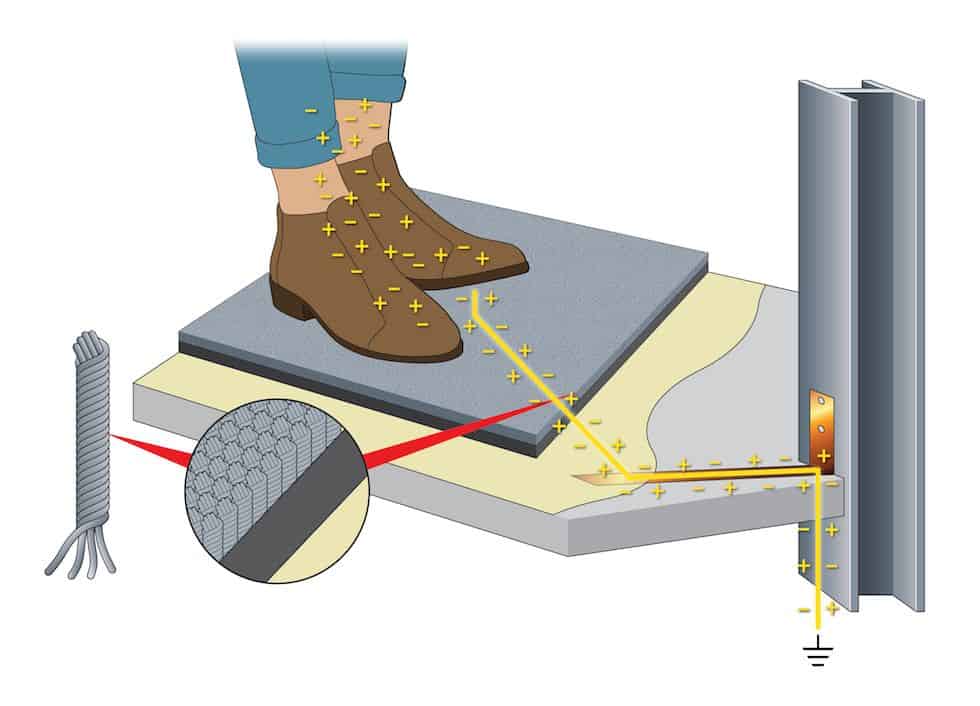Glossary: Path to Ground
The electrical link between a static-dissipative and conductive material and the earth.
Electrical conduit is an example of path to ground; the neutral or “green wire” is attached to the conduit and discharges electricity safely to the earth through the metal housing and pipes encapsulating the “hot wires.”
Functioning conductive or dissipative flooring materials must have some form of external (or exposed) conductivity in order to attach or connect to a path to ground. Static-dissipative carpet, for example, finds a path to ground from: 1) exposed conductive fibers; 2) its dissipative backing; 3) conductive adhesive; 4) copper grounding strips attached to conduit or building steel.
A breach or omission in any of these four mechanisms will result in an open circuit on the flooring surface, with no path to ground.


Learning Center Articles
- ESD Basics
- Installation & Maintenance
- Selecting & Specifying an ESD Floor
- Technical Information
- 7 Common Mistakes Selecting an ESD floor
- A Guide to ESD Flooring Selection
- Avoid Costly Failures: What You Need to Know When Specifying ESD Flooring
- Choosing ESD Flooring for:
- ESD Footwear: What Is It and When Is It Necessary?
- ESD Footwear for Electronics Manufacturing and Handling Applications
- Facility Managers’ Guide to Selecting ESD Flooring
- The Need for Due Diligence in Specifying Static-Free Flooring
- Standard of Care for Specifying Floors in Mission-Critical Spaces
- Understanding the Hidden Costs of ESD Flooring

StaticWorx high-performance static-control floors protect electronic components, explosives, and high-speed computers from damage caused by static electricity. ESD flooring is part of a system. Choices should always be based on objective, researched evidence. When you partner with us, we look at all possible items that may need to integrate with the floor, and, focusing on your goals and objectives, help you find the right floor for your application.








